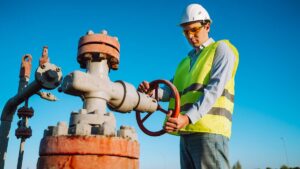The Australian east coast gas shortage could be coming faster than we think

Pic: Getty Images
Australia’s east coast could face a shortfall in domestic gas supplies somewhat sooner than expected, according to global resources consultancy Wood Mackenzie.
While the Australian Energy Market Operator has forecast that there will be no supply shortage before 2030, the consultancy was more pessimistic, saying that the shortfall in gas supplies could come as early as 2023 and that much of the required contingent gas resource is unlikely to be developed.
This could offer explorers the opportunity to bring new supplies of gas into the market, a possibility that the Queensland government has clearly foreseen with its move to set aside more than 30 per cent of its new 30,000sqkm gas acreage release for domestic supply.
While some 100 million tonnes of new liquefied natural gas supplies are projected to enter the global market between 2016 and the end of 2019, leading to the long anticipated LNG oversupply situation this year, WoodMac believes that this is only a temporary reprieve.
“2023 is also around the same time as when the global LNG market starts to tighten, and international prices are likely to rise,” WoodMac research director Nicholas Browne said.
“As such, with the east coast market still contractually short of gas, there will be a call on gas contracted to or owned by the LNG projects. In turn, this could impact domestic prices.”
He suggested that the demand for gas could lead to projects such as the Narrabri coal seam gas development in New South Wales overcoming oppositions from various groups that have left it undeveloped since its discovery in 1993.
“Looking at first gas from 2023, we are forecasting about 36 PJ per annum of gas production with potential of up to 73 PJ per annum when it becomes fully operational,” Browne said.
“This is timely as we expect a lower Gippsland Basin supply through the 2020s. Narrabri would have a significant impact on the balance of the southern gas markets and particularly New South Wales, which would become increasingly self-reliant.
“Given how short the market will become, any additional sources of gas will have a significant impact.”
Browne also warned that there was little doubt that Australia’s east coast would need to import LNG to meet demand by at least 2025 and that a regasification terminal would need to be in place in the event that seasonal shortfalls materialise even earlier.
“We believe that a terminal in Victoria is more urgently required and would see higher utilisation than a terminal in New South Wales. But ultimately, if a terminal in New South Wales moves ahead first, this could also supply Victoria, so there is a clear first mover advantage.”
Now read:
Soaring gas price continues to plague Queensland domestic consumers
UNLOCK INSIGHTS
Discover the untold stories of emerging ASX stocks.
Daily news and expert analysis, it's free to subscribe.
By proceeding, you confirm you understand that we handle personal information in accordance with our Privacy Policy.








